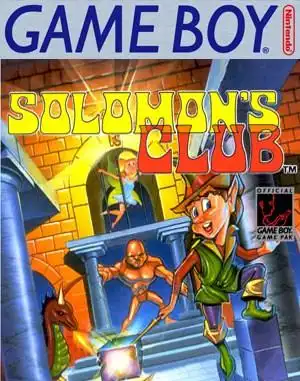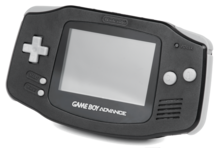For many of us, the Nintendo Game Boy wasn't just a console; it was a portal to adventure that fit in our pocket. Among the pixelated landscapes and chiptune soundtracks resided countless ports, sequels, and original gems. One such title that might have flown under the radar for some, or perhaps holds a quiet corner in their memory, is Solomon's Club for the Game Boy.
If the name sounds familiar, that's no accident. This 1991 release from Tecmo is the portable sibling to the notoriously challenging, block-building puzzle classic, Solomon's Key. But how did the intricate, often brutal design of the NES original translate to the small, monochromatic screen? Let's dust off our old handhelds (or fire up an emulator) and find out.
What is Solomon's Club?
At its core, Solomon's Club Game Boy is a puzzle-platformer that follows the adventures of the young sorcerer Dana. Much like Solomon's Key, your goal is to navigate single-screen rooms, creating and destroying blocks of stone to reach a key and unlock the exit door before a timer runs out. All while dodging or zapping pesky enemies with fireballs.
It retains the fundamental mechanics that made the original so compelling: timing jumps, strategically placing or removing blocks to solve environmental puzzles, and managing limited resources (your ability to create blocks). It's a direct descendant, aiming to bring that specific brand of brain-bending action to the burgeoning world of portable gaming.
Stepping Back into Dana's Tiny Shoes
Playing Solomon's Club feels instantly familiar if you've spent any time with its NES predecessor. You still control Dana, moving him left and right, jumping, and using his magic staff. The core loop is identical: find the key, get to the door.
However, the Game Boy version introduces a few tweaks to the formula right off the bat. There's a handy password system, a welcome relief from the often unforgiving continue system of the original. The controls, while initially mapped differently (jump on A instead of Up on the D-pad), can thankfully be reconfigured to match the classic Solomon's Key setup. Small quality-of-life improvements that make the portable experience a bit more player-friendly.
The Game Boy Difference: New Twists on a Classic
This isn't just a straight, shrunken port. Solomon's Club adds a few elements that distinguish it:
- The Shop System: A significant addition is the inclusion of shops (often disguised as an "Inn"). Here, you can spend coins collected in levels on helpful items like hammers (to break mirrors, preventing enemy spawns), water guns (to douse flames), speed boots, and hats that let you break blocks in one hit. This adds a new layer of strategy – do you save up for a powerful item, or spend coins for immediate help?
- Inventory: Coupled with the shop, there's an inventory screen to manage your collected and purchased items. This makes the item system feel more integrated than the often hidden or temporary power-ups in Solomon's Key.
- Unique Levels and Enemies: While many early rooms are scaled-down versions of Solomon's Key stages, Solomon's Club introduces genuinely new level designs and even a few enemy types that feel inspired by other puzzle games of the era, like The Adventures of Lolo.
- Difficulty Curve: Players of Solomon's Key know its difficulty can spike dramatically early on. Solomon's Club generally offers a gentler, more manageable curve, though it does ramp up significantly in later levels, particularly with intricate flame pillar puzzles.
How Does it Compare to Solomon's Key?
Here's where the nostalgia and critical eye meet. Solomon's Club is undoubtedly a well-made Game Boy game, but it can't quite replicate the full scope or intensity of the NES original.
- Scale and Ambition: The Game Boy version feels smaller, both in screen size and overall ambition. While it has a similar number of rooms, the structure feels tighter, and the ending can feel a bit abrupt compared to the multi-ending system tied to collecting hidden seals in Solomon's Key. Speaking of seals, they are present here too, seemingly unlocking a final challenge area rather than altering the ending significantly.
- Aesthetics: The iconic, slightly unsettling music and detailed sprites of Solomon's Key are scaled down. While Solomon's Club has some catchy tunes (including faithful renditions of original tracks), the overall aesthetic is simpler, a necessary compromise for the hardware.
- Challenge: While still challenging, it rarely reaches the frustrating peaks of the NES game. The added items and password system make it a more forgiving experience.
Despite these differences, Solomon's Club successfully captures the spirit of Solomon's Key. It distills the core puzzle mechanics effectively onto a portable device, much like how Super Mario Land captured the essence of Super Mario Bros.
Is it Worth Replaying Today?
Absolutely, especially if you have a fondness for the original Solomon's Key or retro puzzle games in general. Solomon's Club is more than just a curiosity; it's a solid, well-designed portable puzzle game that offers a different perspective on Dana's quest.
It's a fantastic example of how developers adapted complex console experiences for the limitations (and unique charm) of the Game Boy. While it might not replace the original in your heart, it's a worthy addition to the series and a fun challenge to tackle on the go.
Finding a physical copy might require some searching in the retro market, but the game is also readily available via emulation for those looking for a quick trip down memory lane.
FAQ
Q: Is Solomon's Club a direct port of Solomon's Key? A: No, it's a distinct game built on the same mechanics. It features new level designs, enemies, and additions like a shop system and password saves.
Q: How many levels are in Solomon's Club? A: The game features several levels, each with multiple rooms, culminating in a final challenge area, though it feels shorter than the NES original's structure.
Q: Is Solomon's Club part of the official Solomon series? A: Yes, it's considered a spin-off or portable entry in the series, developed by Graphic Research and published by Tecmo.
Q: Is it as difficult as Solomon's Key? A: While challenging, it generally has a less brutal difficulty curve than the NES game, especially in the early stages, thanks in part to the password system and helpful items.
Whether you played it back in the day or are discovering it for the first time, Solomon's Club Game Boy offers a delightful dose of retro puzzle action. It's a testament to the Game Boy's ability to host compelling experiences and a neat piece of the Solomon's Key legacy. Happy block building!


